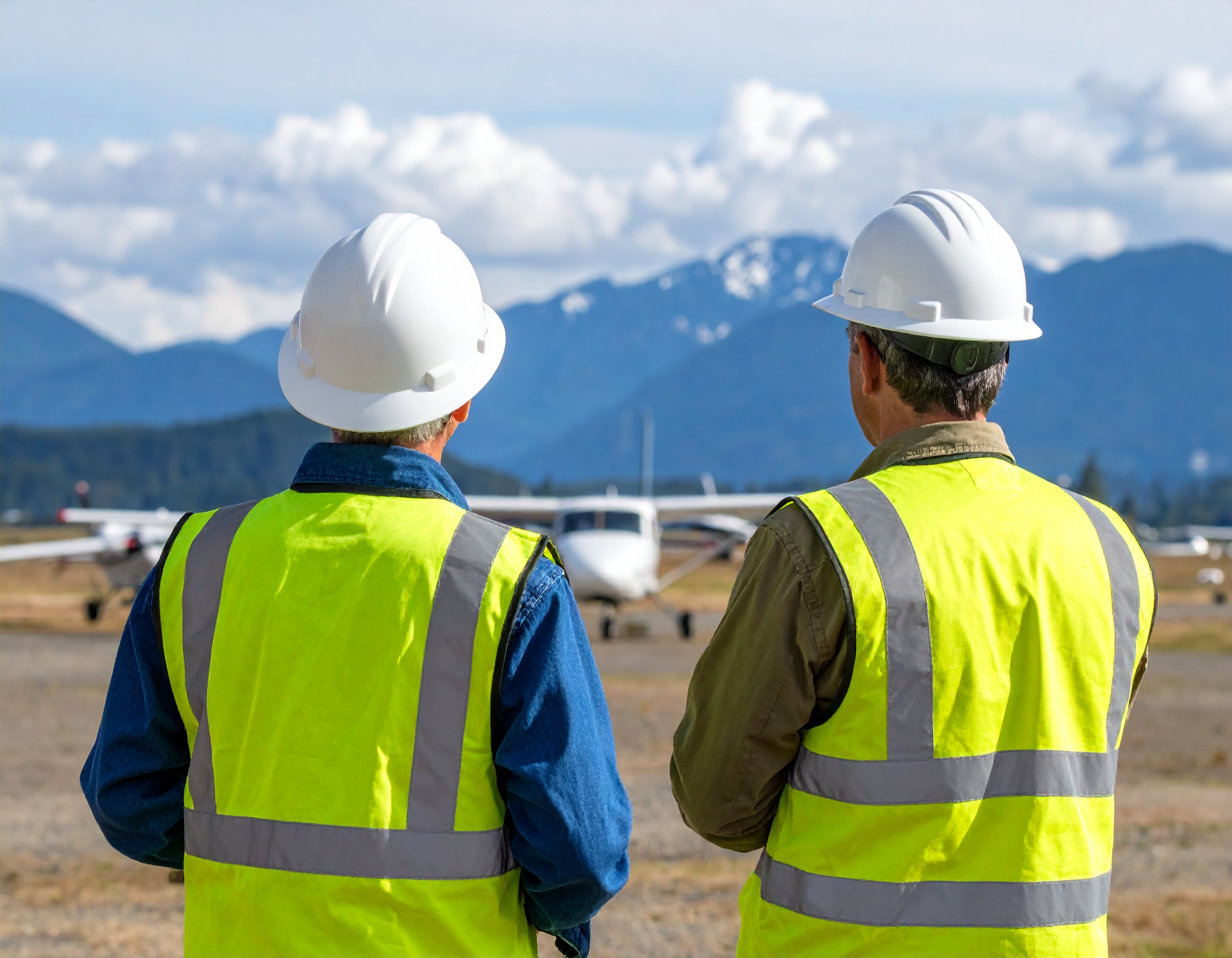Stepping onto an active runway can feel like the opening scene of a high-stakes movie. For those working in airport construction and inspection, it’s just another day on the job. But behind that confidence is something far more deliberate than good instincts: training. Century West is lucky to have James Kirby, PE—an Aviation Senior Project Manager—training our staff, subconsultants, and contractors about how to keep themselves and others safe in airport environments. We sat down with James to learn about the Airport Safety Training Program’s origins and why it is now required for consultants working at all Oregon Department of Aviation (ODAV) state-owned airports and beyond.
Born from Experience, Built for Impact
James recalls his first experience as an Engineer-in-Training with a previous employer being sent out with only a radio, a vest, and the vague warning: “Don’t get hit by an airplane.” That moment of uncertainty planted the seed for a training program he has developed and refined over his more than 25-year career.
“When I started, there wasn’t a real system,” James explained. “I had to figure it all out on the fly—how to use a radio, who to talk to, how to be safe while also doing my job. It wasn’t the right way to do things, and I knew we could do better.”
That realization sparked what would become an iterative, real-world-grounded safety program aimed at preparing field staff for the nuanced and high-stakes environment of active airfields. James recreated the program, which has been reviewed and approved by the Federal Aviation Administration (FAA), when he joined Century West in November 2015.
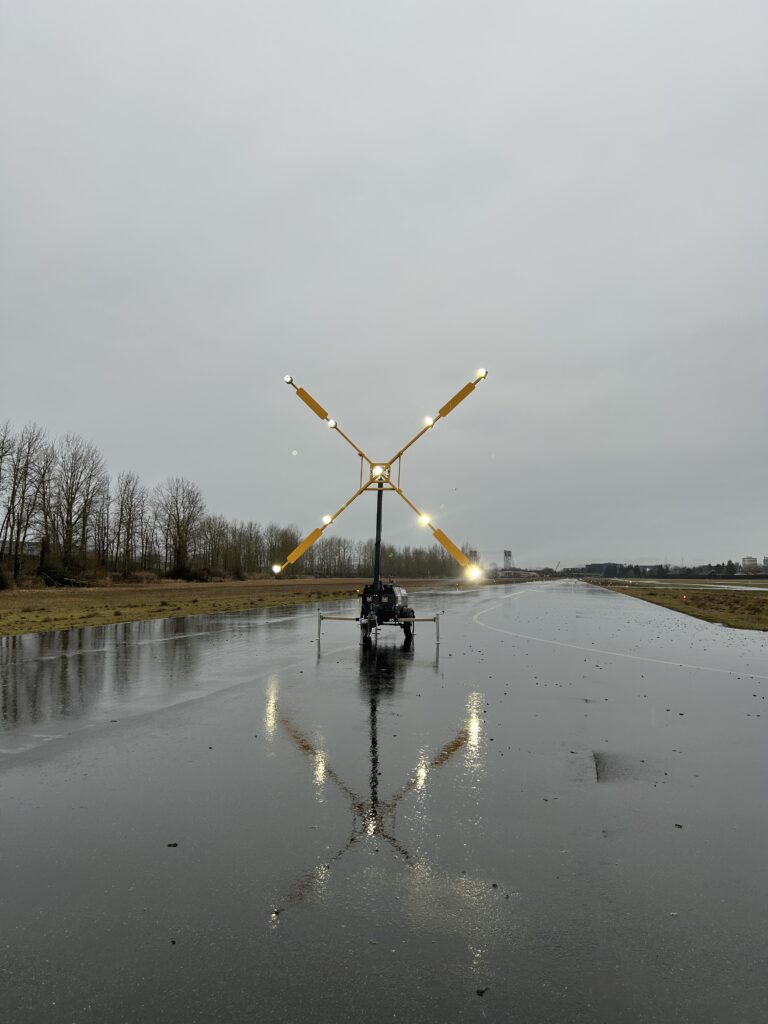
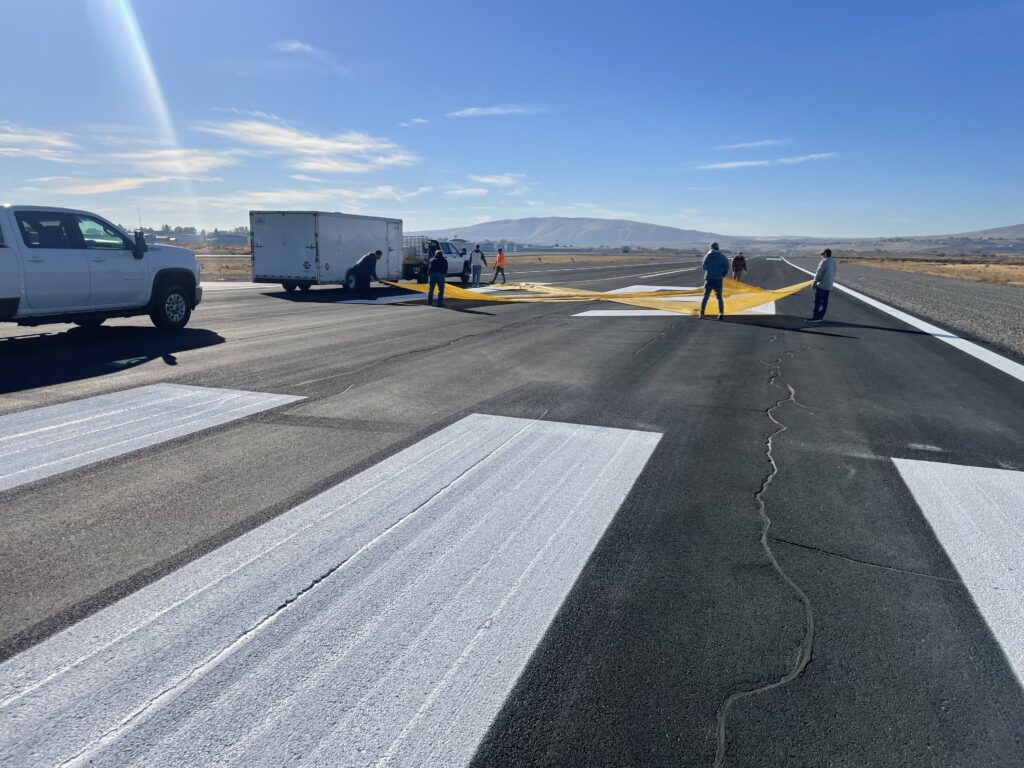
More Than Compliance—A Commitment to Culture
The Airport Safety Training Program is not just a set of rules. It is a living system that combines FAA fundamentals with lived experiences and practical application. It evolves with every project and every lesson learned.
“We incorporate stories—real events, real situations—because that’s how people learn,” said Kirby. “Much of what we teach is the why, the how, and the anecdotes that bring it to life.”
The program goes well beyond Century West staff and inspectors. Contractors, subconsultants, and even airport client staff have been trained through it. Century West has redefined its standard for airport training around the program: anyone who works on an ODAV airport project must go through the training and be certified every two years.
Training Breakdown: Structure That Works
The program is offered multiple times per year and includes a comprehensive four- to five-hour course broken into three core modules:
- Airport 101: A foundation course tailored to the specific airport or a general overview for broader initiatives like ODAV’s Pavement Management Program. It covers airfield layouts, common signage, light systems, and operations.
- Safety During Construction: Focuses on runway closures, cone placement, incident response, and the dos and don’ts of a worksite on an active airport.
- Radio Communications: Hands-on, verbal testing where participants simulate real-world radio exchanges, learning how to talk to towers, aircraft, and other personnel effectively and safely.
Following the modules, participants must complete a verbal radio test and a written knowledge exam. Every score is recorded and tracked. If someone is not on the certified list, they are not permitted to work on ODAV airport sites in a responsible role.
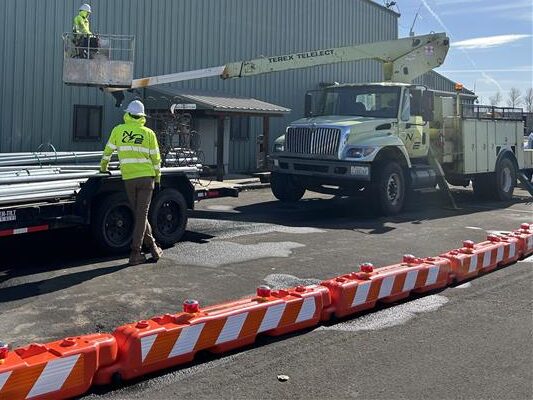
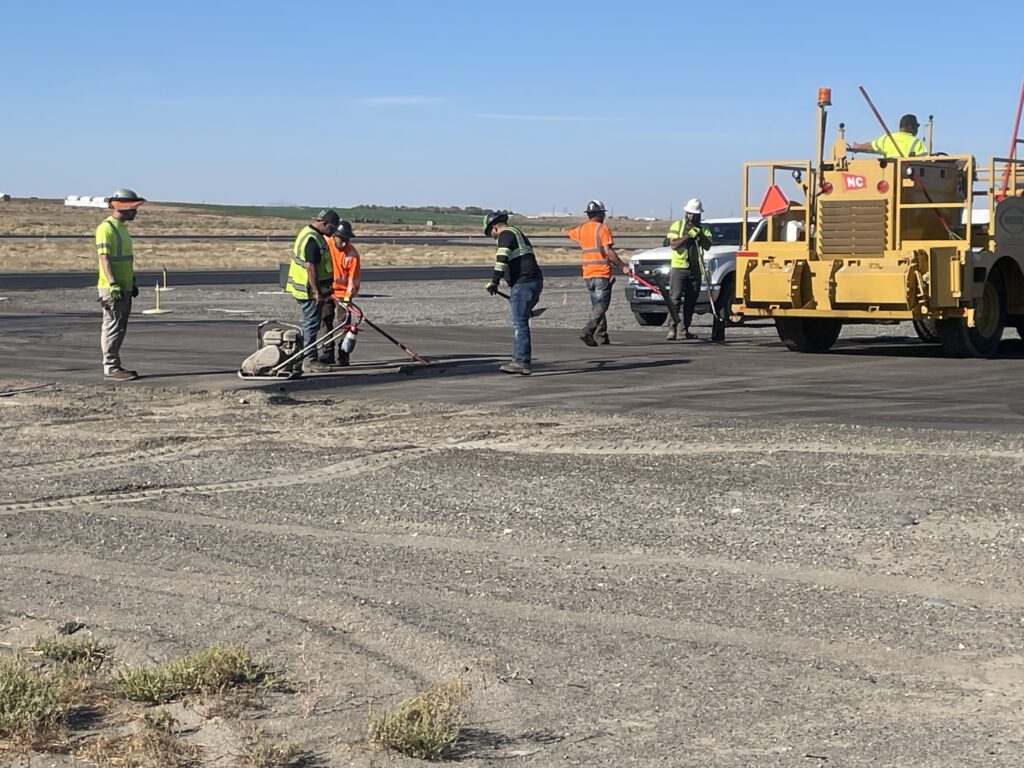
Tangible Benefits, Real-World Success
Training isn’t just about avoiding accidents—it’s about setting up projects for success. James worked with Century West Project Manager Bryan Condon, PE to bring the training to the Port of Benton ahead of the 2022 construction of the Richland Airport Runway and Taxiway Electrical Replacement project. Over 20 individuals participated, including contractors, subconsultants, and representatives from the Port. James and Bryan worked to tailor the sessions to provide training specific to Richland Airport’s layout and the project’s specific phasing.
“We showed them their signage. Their phasing. Their layout. It gave the Port, the contractor, and others involved in the project confidence and a solid basis in safe operations during construction from day one,” James shared.
This half-day commitment to preparedness led to smoother operations, reduced preconstruction time, and zero safety issues throughout construction. The project won Washington Airport Management Association’s Project of the Year Award in 2023.
Bridging the Training Gap
Century West’s approach contrasts sharply with the industry norm of “learn by osmosis,” a method that often leaves professionals underprepared and overexposed. James is candid about the need for more structure in airport and inspection training in general.
“We’ve built inspection training too,” he said. “We don’t expect people to figure it all out on their own. That mindset leads to mistakes, blown budgets, and broken relationships. Clear expectations and training are a much better way.”
Looking Ahead
With an increasing number of airports transitioning to more complex, towered environments, and more first-time contractors entering the space, the need for comprehensive safety training has never been greater. And Century West is ready.
Whether it’s a small rural airstrip or a busy towered airport, our mission remains the same: everyone who sets foot on an airfield must know what they’re doing, why it matters, and how to keep themselves—and others—safe.
At Century West, we’re not just building infrastructure—we’re building confidence, competence, and a culture of safety that sets the standard in the industry.

